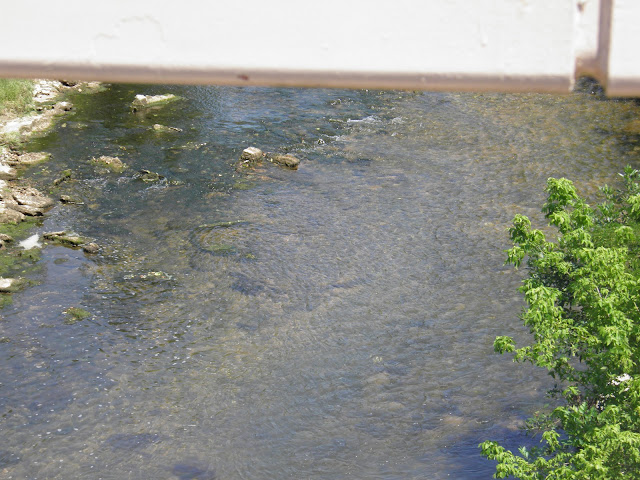

Even then, the landscape had not been changed so dramatically as to compare with areas further east that had seen settlement since colonial times, and much of the scenery remained pretty natural. The battle at Wilson's Creek, thus, was not quite the same open-field affair that Manassas had been. There were farms in the area, and open land did exist in the form of patches of tallgrass prairie and oak savanna...




...but by and large southwestern Missouri was forested.


Southwest Missouri is a wonderful western extension of forest, so much so that it offers a remarkable contrast to the nearby tallgrass prairies of nearby parts of Kansas and Oklahoma. The area is on the edge of the Ozarks, and plentiful moisture and warm weather reaches into the place from further south, enough so to classify the region as humid subtropical climatically. No, this is not the realm of baldcypress trees and evergreen magnolias, but it is definitely a southern affair. The forests were reasonably thick, the landscape well watered and the ground sometimes muddy. This was a difficult place to have a battle, and really was only chosen as a mark of convenience with which to block assaults on a retreat. Thankfully, most of the men fighting were from the area, or at least neighboring states, and knew the terrain and what to expect of the weather. This was not a situation of green recruits from states bordering Canada falling over in the heat and humidity as had been the case in Virginia.
So, what can one see here? Not much in the way of monuments and grave markers. The battles further out to the west of the then-United States were often side-shows in comparison to the carnage of the eastern sites. All the same, the park service has done a truly remarkable job of preserving the landscape intact, have marked battle positions rather well, and have a visitor center and museum complete with a full-blown, first rate research library that aids research historians not only looking to find out more about the battle, but about the war in general. The same cannot be said for the sites at Manassas, Gettysburg, or other major sites. Heck, the same cannot be said for most national park sites. To be blunt, this might be, pound for pound, the best Civil War park site out there. The staff was knowledgeable, friendly, and genuinely interested in telling the story of not just this battle, but of the state of Missouri and the war in general. The place is definitely worth a stop on a Civil War tour, and is pretty much an essential part of any trip focused on the state.
Oh, and yes, you can also see the creek itself. A creek, to be sure, but a substantial one, and a nice treat to see after crossing so many braided or non-existent streams not too far away in Oklahoma.




No comments:
Post a Comment